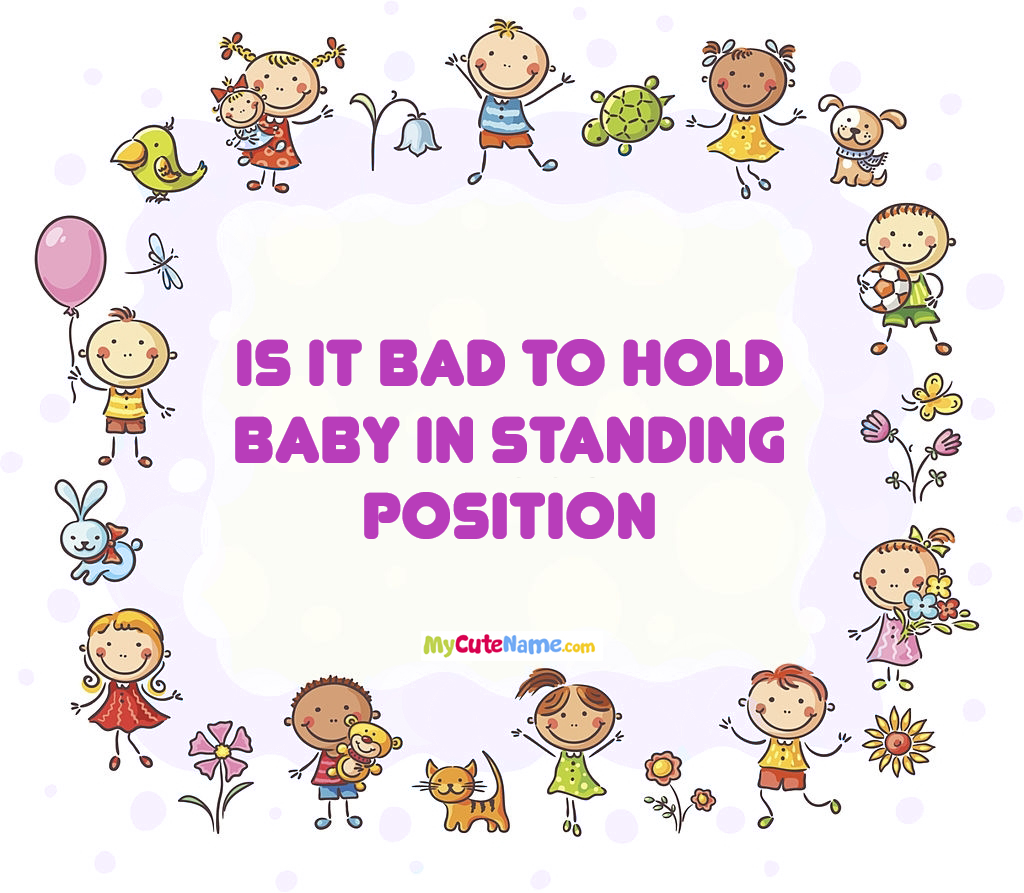


Introducing your baby to new experiences and activities is an exciting part of parenting, but it's essential to consider their physical development and safety along the way. One common question that many parents have is whether it's harmful to hold their baby in a standing position. While standing can be a fun and engaging activity for babies, especially as they become more curious about the world around them, there are important factors to consider regarding their muscle strength, bone development, and overall well-being. Let's explore the implications of holding a baby in a standing position and discuss the potential risks and benefits associated with this practice.
When and Why Parents Use the Standing Position
Parents often choose to hold their babies upright as a way to introduce them to the world in a more engaging manner, allowing them to interact with their surroundings and experience a change in perspective. This position is also believed to promote physical development by encouraging babies to bear weight on their legs, thus strengthening important muscles needed for standing and walking later on. Additionally, some infants find the upright position soothing, especially if they are feeling fussy. While the intention behind holding babies in a standing position is typically positive, it's important to consider both the potential benefits and drawbacks of this practice.
The Potential Benefits of Using the Standing Position
Holding babies in a standing position can offer several developmental benefits when done in moderation and under appropriate circumstances. Firstly, it promotes enhanced visual and social development by allowing infants to visually explore their surroundings and engage in face-to-face interactions. This upright perspective aids in visual tracking skills, hand-eye coordination, and understanding distances. Secondly, bearing weight on their legs encourages the engagement of leg muscles, supporting their development for future physical milestones such as standing, cruising, and walking. This muscle engagement also facilitates weight shifting, contributing to overall mobility. Additionally, for some babies, the standing position can have a calming effect, providing a change of scenery and allowing them to observe their environment peacefully. However, despite these potential benefits, it's essential to be mindful of the associated health risks.
The Dangers and Risks of the Standing Position
While holding infants in a standing position may seem beneficial, it poses potential hazards if not approached with caution. One concern is the risk of hip dysplasia, as premature or excessive standing can strain developing joints. Additionally, infants lack sufficient head and neck control, making it challenging to support these areas adequately while upright. Facing away from the caregiver may also hinder the monitoring of the baby's cues and facial expressions, potentially overlooking signs of distress. Moreover, the standing position increases the risk of falls and accidents, particularly if the baby lacks proper leg strength. Furthermore, it limits the infant's natural movements and responses, potentially impeding their motor learning process. While the standing position can be appealing, it's crucial for parents to be aware of these hazards and take appropriate precautions to ensure their baby's safety and well-being.
Safety Precautions When Using the Standing Position
When incorporating the standing position for your baby, it's essential to prioritize safety by adhering to specific guidelines. Firstly, always provide comprehensive support under the baby's bottom, core torso, back, and neck, avoiding any instances of dangling without proper assistance. Additionally, limit the duration of time spent in the upright position, especially during the early stages, starting with short intervals of 1-2 minutes. Vigilantly observe the baby's signals, including facial cues, body language, and cries, and promptly cease if any signs of discomfort or distress arise. Ensure proper alignment of the baby's hips, knees, neck, and back, avoiding unsupported leg dangling. Furthermore, consider upgrading baby gear as necessary to enhance back and neck support during upright holding. Adhering to these safety measures can effectively mitigate the risks associated with the standing position. However, it's also crucial to consult health organizations for guidance on age appropriateness to ensure optimal infant care.
Age-Appropriate Guidelines for the Standing Position
Pediatric experts advise against holding newborns upright due to their limited muscle strength and developmental readiness for this position. It's crucial to minimize time in the upright stance during the first few months. However, around 6 months, when infants have achieved significant progress in neck control and core strength, brief assisted standing can be cautiously introduced. It's essential to increase the frequency and duration of assisted standing gradually between 9-12 months as the baby demonstrates readiness by achieving motor milestones like independent sitting. Each child's developmental timeline may vary, so maintaining open communication with the pediatrician is recommended to ensure appropriate progress. Nonetheless, are there specific situations that demand extra vigilance?
When to Ask Your Pediatrician Before Trying
For certain infants, particularly those with specific health conditions or risk factors, introducing upright supported standing requires extra caution. This includes babies born prematurely, those with birth defects such as muscular issues or hip dysplasia, as well as those with conditions like hypotonia (low muscle tone) or hypermobility. Additionally, a family history of orthopedic issues may warrant careful consideration. If your baby falls into any of these categories, it's essential to consult with your pediatrician before attempting assisted standing. They can provide personalized guidance and evaluate whether it's suitable or requires modifications based on your child's individual needs and health status.
Developmentally-Appropriate Toys for Building Strength
Parents can harness the power of everyday household items to promote their baby's physical development in simple yet effective ways. Instead of relying solely on fancy developmental toys and baby gyms, items readily found around the house can serve as valuable tools. Rolled towels or blankets can offer gentle support to babies as they work on rolling or sitting skills. Low surfaces and couches provide stable platforms for babies to practice pulling up, gradually progressing to higher surfaces like crib rails. Even cardboard boxes, when opened and empty, can transform into engaging activity centers for toddlers, fostering play and even encouraging early steps while holding onto the rim. By creatively repurposing common household items, parents can provide their babies with opportunities to enhance their physical skills without relying excessively on restrictive baby gear.
How Parents Can Help Baby Progress to Standing
In addition to incorporating tummy time into their baby's routine during the early months, parents can employ various strategies to encourage progress towards standing upright. Providing ample supervised floor time allows babies to explore and develop their motor skills through crawling. Around the age of 6 to 9 months, parents can assist their baby in standing by bearing some of their weight while they bounce supported on their lap, ensuring to monitor for signs of fatigue. Making standing activities engaging by singing songs and playing games can help maintain the baby's interest. Parents can also demonstrate standing, cruising, and walking skills for their baby to observe, providing motivation for reaching the next developmental stages. It's essential to childproof the home for safety once the baby starts pulling up and cruising. With patience and attentiveness to the baby's cues, parents can foster safe and steady progress towards standing.
An Overview of Key Standing Milestones
In addition to incorporating tummy time into their baby's routine during the early months, parents can employ various strategies to encourage progress towards standing upright. Providing ample supervised floor time allows babies to explore and develop their motor skills through crawling. Around the age of 6 to 9 months, parents can assist their baby in standing by bearing some of their weight while they bounce supported on their lap, ensuring to monitor for signs of fatigue. Making standing activities engaging by singing songs and playing games can help maintain the baby's interest. Parents can also demonstrate standing, cruising, and walking skills for their baby to observe, providing motivation for reaching the next developmental stages. It's essential to childproof the home for safety once the baby starts pulling up and cruising. With patience and attentiveness to the baby's cues, parents can foster safe and steady progress towards standing.
Conclusion
In conclusion, while holding a baby in a standing position can offer some developmental benefits, it's crucial to approach it with caution and moderation. The practice can aid in enhancing visual and social development, engaging leg muscles, and providing a calming effect for some babies. However, it also poses risks such as hip dysplasia, lack of head and neck support, and a higher fall risk if not done properly. By following safety guidelines, being mindful of the baby's cues, and considering age appropriateness, parents can minimize the risks associated with holding a baby in a standing position while still fostering their development. As with any aspect of parenting, it's essential to stay informed and consult with healthcare professionals if there are concerns or questions about the practice.
Note: Please also check your spam or junk email folder.